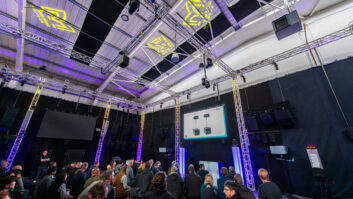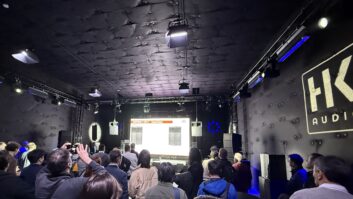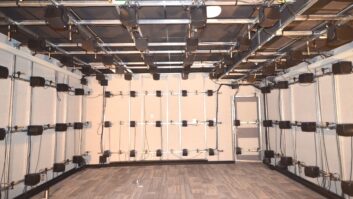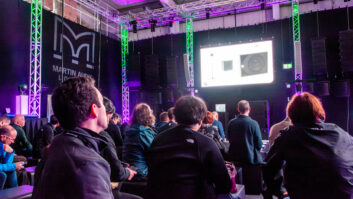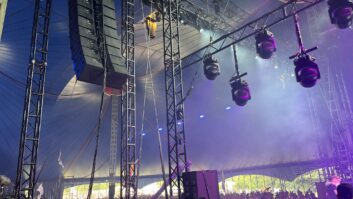The Royal Shakespeare Company in Stratford, home to The Bard’s great works, has once again opted for TiMax SoundHub to assist with spatial audio control and timing in its theatres. The RSC first introduced TiMax to its 450-seat Swan Theatre over a decade ago and now, as the opportunity arose, they have upgraded that system to the latest TiMax FPGA spatial audio core and added an extra TiMax SoundHub-S64 with MADI to the main 1200-seat Royal Shakespeare Theatre’s sound control, to provide further dimension to this unique world-famous venue. The installation was supplied, supported and installed by digital audio experts, HD Pro Audio.
“The joy of TiMax of course is that it’s developed for the needs of theatre and works just as we need it to,” said RSC’s head of sound Jeremy Dunn. “TiMax just makes everything else work smoothly and for us it’s imperative that it’s there. TiMax doesn’t colour the sound so what you put in you get out, which is really important for us.”
 TiMax plays an important yet unusual role at the RSC, in place as a multi-channel speaker management system which is controlled separately from the sound designer and the sound desk by the production sound technician. That separation is vital. Dunn is adamant that the sound designer will never touch it as, “…it has to be available for us to make minor adjustments when we need to. It may be a silent partner in the audio chain, but it’s imperative that it’s there and reliably doing its job – and we feel at ease connecting with it.”
TiMax plays an important yet unusual role at the RSC, in place as a multi-channel speaker management system which is controlled separately from the sound designer and the sound desk by the production sound technician. That separation is vital. Dunn is adamant that the sound designer will never touch it as, “…it has to be available for us to make minor adjustments when we need to. It may be a silent partner in the audio chain, but it’s imperative that it’s there and reliably doing its job – and we feel at ease connecting with it.”
The Royal Shakespeare Theatre’s thrust stage is the reason TiMax plays such an important role. Whilst affording the audience incredible sightlines for the performances, the thrust stage is challenging from an audio perspective. With the seating effectively wrapped around the stage in rows up to 80 seats wide, delay times to the circa 65 delay speakers in the auditorium need to be accurately managed to ensure proper alignment and accurate spatial localisation.
Equally, a thrust stage offers endless possibilities for set design. As sets change, however, so do the speaker positions and their time alignment. Dunn applauds TiMax for the simplicity of its interface: It’s a lot easier now to simply time align speakers when they’re moved, and we have far greater control over the system.” The production sound technician is able to move to each delay position and simply update time alignment and EQ on a PC or Mac primed with TiMax software, leaving the desk operator free, as Dunn puts it, “to do the best job they possibly can”.
Overall, Dunn is delighted with the ease and simplicity TiMax has bestowed upon the complex function of system and spatial management in the unusually shaped Royal Shakespeare Theatre spaces. “In short, it’s totally reliable and is ready to use whenever we need it and it doesn’t colour the sound,” he concluded. ” It also gives us a greater degree of control over the sound system so that we can fire up the system and easily make adjustments to make the sound better: and it’s tiny adjustments like that, which make all the difference.”

